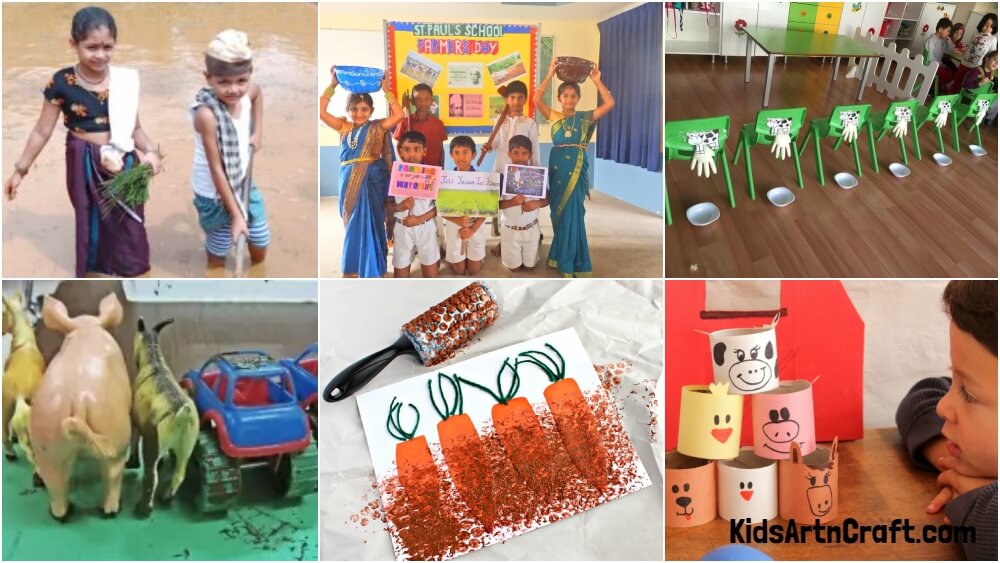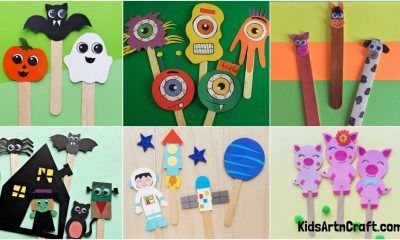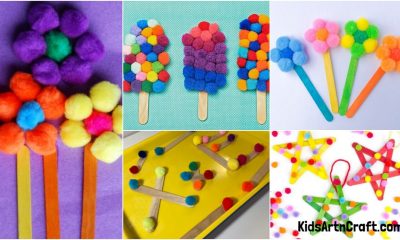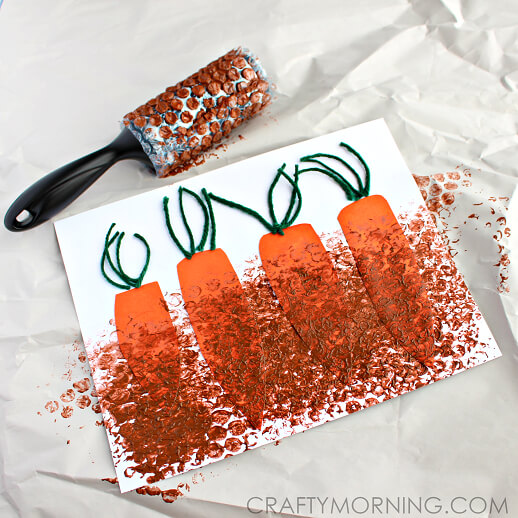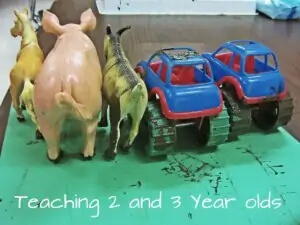Celebrate
Farmer’s Day Activities for Students

Discover engaging and stimulating activities to perform during Farmer’s Day to immerse students in classes for preschool and kindergarten.
Farmers and agriculture are two sides of a coin. Through fun activities, students can gain a better understanding of the hard work and dedication that farmers put into their farming. Check out new creative ideas and fun activities for school students to do on Farmer’s Day celebration. To make children aware of farming and field activities involved in agriculture, the following activities are being carried out.
Farmer’s Day activities for students is a great way to get kids involved in learning about agriculture and the important role farmers play in providing food for our society. Through these activities, kids can also learn valuable lessons about taking care of the land and protecting the environment. In this article, we’ll explore some of the best Farmer’s Day activities for students that can be easily implemented in the classroom.
Farmer’s Day Activities For Students
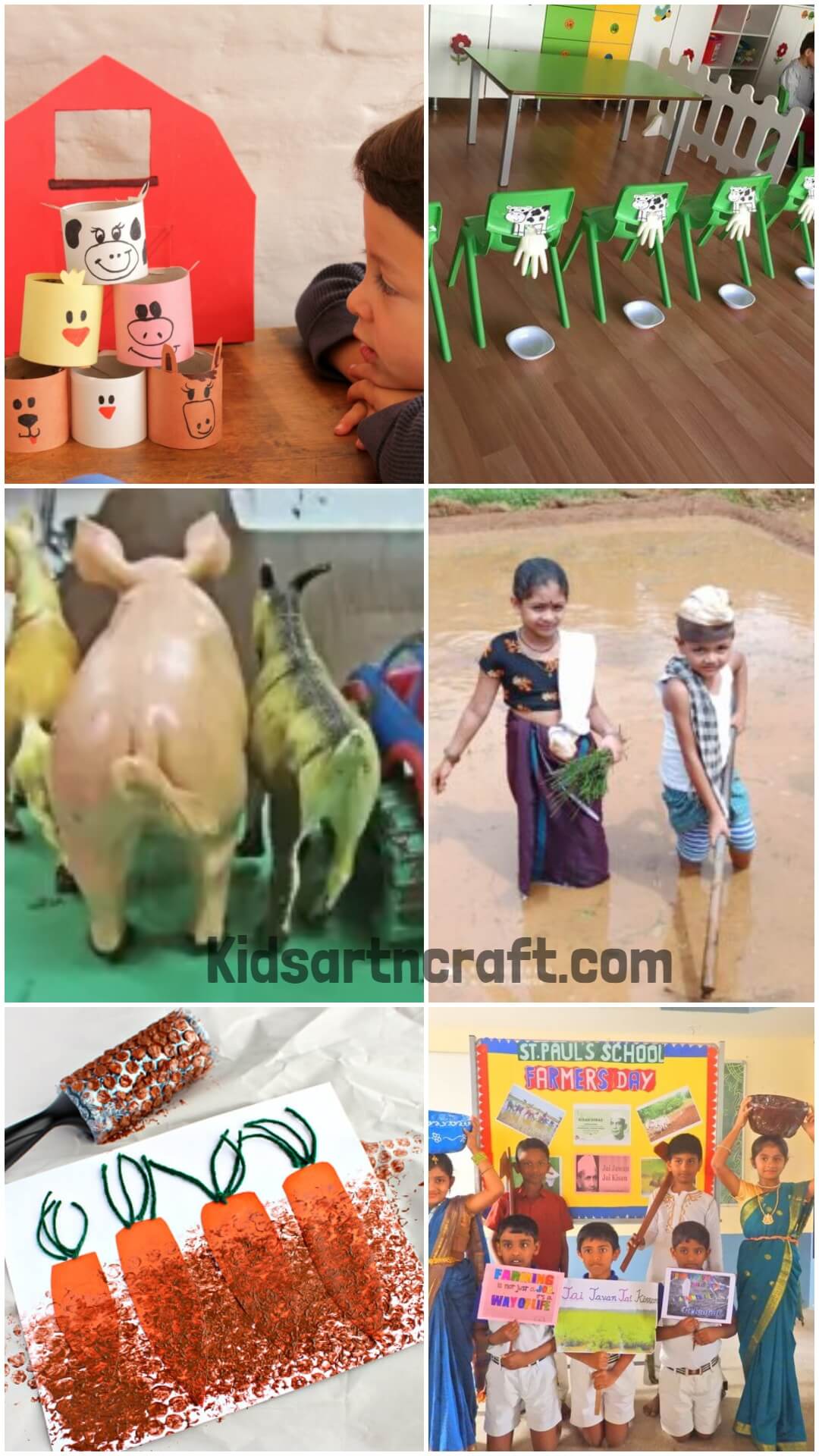
Read More: Straw Activities for Preschool & Kindergarten
These actions are suitable for students of preschool and kindergarten through which they get to know the farmer’s lifestyle, the crops grown and the animals maintained. Here we have suggested a few unique activities for children on the theme of Farmers’ Day.
Awesome Farmer’s Day Activities For School Kids In India
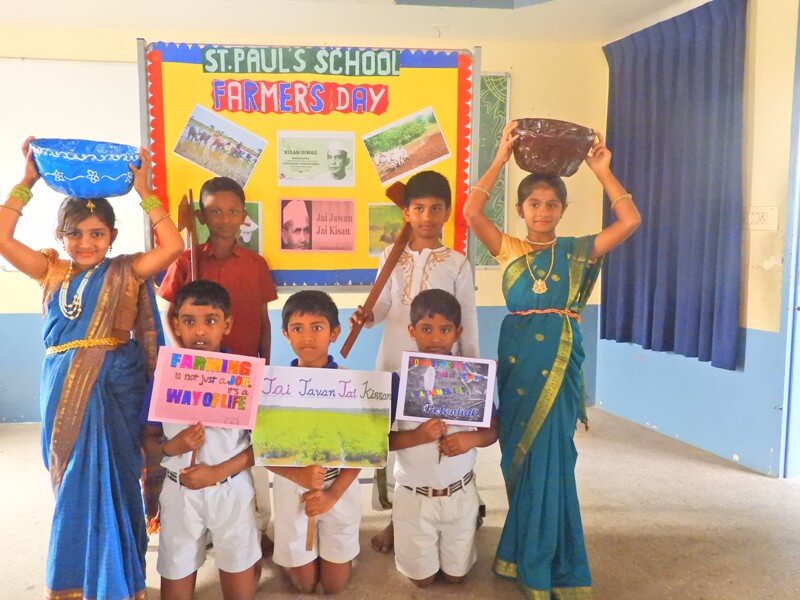
Image Source/Tutorial: St Paul School
Check out the fancy dress display of students at the Farmer’s Day celebration. Just choose a team of students to represent the farmers by clothing like them. While women wear sarees and take hand-woven baskets with them, men wear dhotis as they carry plows, mattocks, and other tools for agriculture. The outcome of this fancy dress display is that the children gain knowledge about the farmers’ life and routine.
Amazing Farm Activities For Small Kids
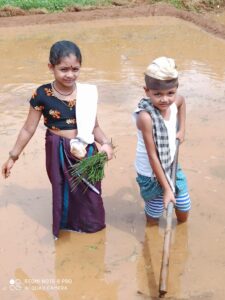
Image Source/Tutorial: Lips
On-field activity is more welcomed among the students as it involves visiting places and executing the actions belonging to that particular place. Likewise, on Farmer’s Day, children should be taken to the farm in a village, and make them to do some farm activities like sowing seeds in the farm field. A lively venture of visiting and participating in farm activities will provide students with a deep understanding of agriculture and farmers.
Agriculture Activities: Carrot Painting Craft For Kids
Find an interesting craft activity based on plants. For this activity, all you need is a lint roller, bubble wrapper, paint, and colored craft paper (orange). Cut and stick the carrot shapes and roll the bubble-wrapped lint roller covered with brown paint over the carrots. This activity is for kids ages 3 to 5 years. From this action, kids gain knowledge about edible roots and root types in plants.
Super Fun Farm Animals Bowling Game For Kids
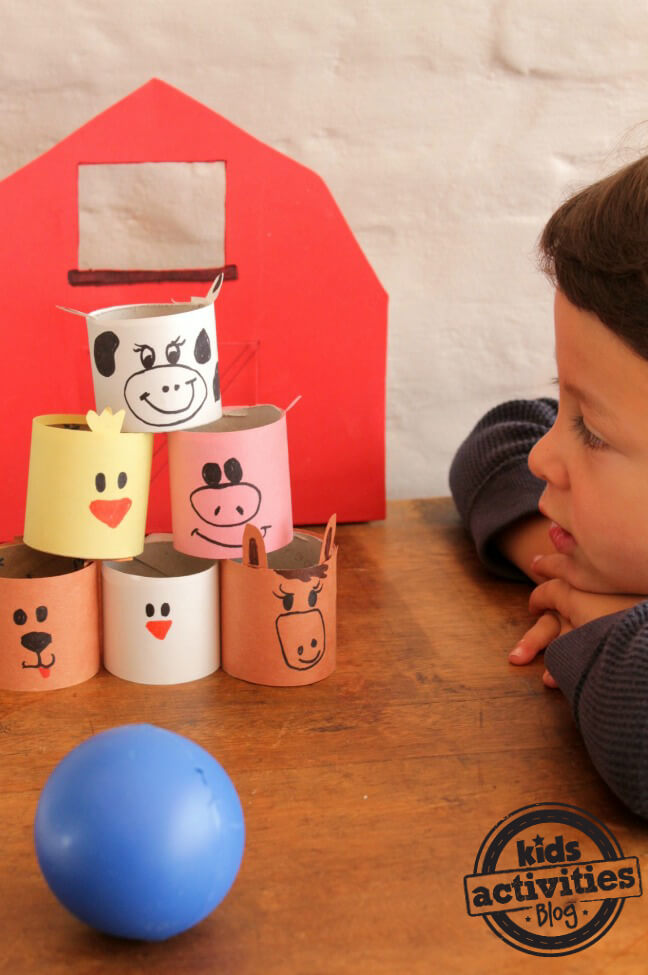
Image Source/Tutorial: Kids Activities Blog
Read More: Octopus Crafts Using Styrofoam Balls
Check out the amusing Farm Animals Bowling Game for kids. This is more than an appropriate activity for preschool kids which helps them to identify various farm animals by name and learn to imitate their respective sounds once they are knocked down by the ball. The farm animals are recreated using toilet paper roll tubes covered with colored craft paper. The faces of the animals are drawn for identification and to add fine details.
DIY Sheep Craft For Wall Decoration On Farmer’s Day

Image Source/Tutorial: No Time For Flash Cards
Here is another cool farm activity for preschoolers – Sticky Sheep Farm Activity. Take some regular white paper, contact paper, and a printout of a sheep’s head and limbs and stick them together. In this activity, pom poms are used as the fur which should be stuck on the body of the sheep. This farming activity is designed to help kids to develop their motor skills, learning countings, and exposure to a variety of textures. You’ll add a bit of fun to learning by picking up contact paper and putting some pom poms on it.
Farmer’s Day Exciting Games For Kindergarten Kids
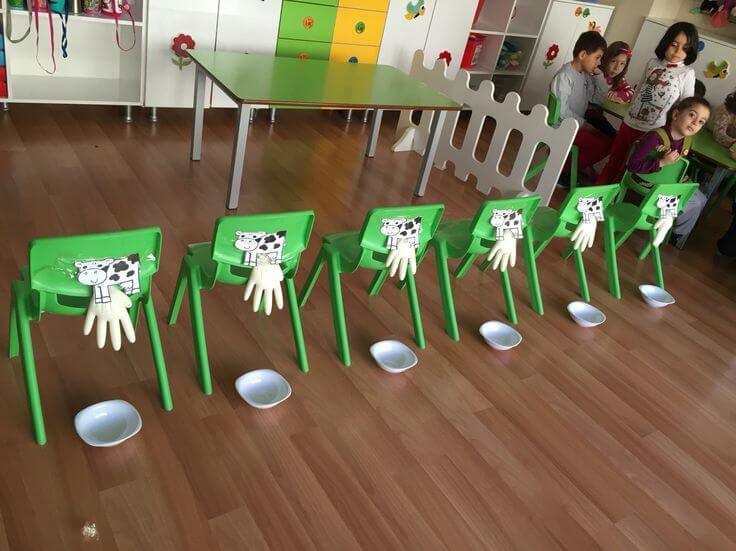
Image Source/Tutorial: Pinterest
Look into the above farm-based activity representing the main farm animal – the cow. To set up this fun indoor farm activity stick white gloves filled with either milk or water at the back of the chairs and paste cow drawings just above the gloves on the chairs. These gloves under the cow images resemble their udders. This activity shows the kindergarten kids how and from where the milk is produced and collected. Milking a cow helps in triggering motor skills in kids.
Preschool Farm Activities For Kids To Enjoy
Make muddy footprints and tyre prints using Toy farm animals and paint. This is a practical idea to create a fun process art project! It’s suitable for children of age 2 and 3 years old. Collect big farm animal toys and farm vehicles like trackers. Touch the foot and tyres on brown paint then stamp and roll them on a base to create prints. Skills like stamping and motor squeezing actions are involved in this activity. So what are you waiting for? Let’s do this farm activity!
FAQs Related To Farmer’s Day Activities For Students
1. What are the activities that can be done on Farmers Day?
Farmers Day is a celebration to recognize the hard work and dedication that farmers have put into their craft. There are many activities that can be done to celebrate Farmers Day. These activities include holding a parade, hosting a potluck dinner, or even setting up a local farmers market. Other activities may include having a farm tour, giving out awards to local farmers, or organizing a festival in the town or city. Additionally, educational activities such as presentations and workshops on sustainable farming practices may be organized. All of these activities are a great way to honor and recognize the hard work and dedication of local farmers.
2. What is main farming activity?
Farming is a major activity around the world, and it involves growing crops and raising livestock for food and other products. It is an important part of many cultures, and it is necessary for providing food for people and animals. Farming activities can include planting, harvesting, cultivating, and managing livestock, as well as managing land for pasture and forage. Farmers must also use modern technology to improve their production and to increase their yields. Farming is a complex and rewarding activity that helps to provide for our basic needs.
3. What are the agricultural activities?
Agricultural activities are those related to the production of food, fiber, and other goods through farming and forestry. These activities include growing crops, raising livestock, keeping bees, and using natural resources such as land, water, and air to produce goods. Other agricultural activities include irrigation, drainage, soil conservation, pest control, and crop rotation. In addition, farmers may also use machinery and technology to enhance their productivity and efficiency. As the world’s population grows, the demand for food and agricultural products increases, resulting in a need for more efficient and sustainable agricultural activities.
4. What are the 7 agricultural practices?
The 7 agricultural practices are tillage, crop rotation, irrigation, fertilization, pest control, harvesting, and post-harvest handling. Tillage is the mechanical manipulation of the soil to prepare for planting, while crop rotation is the changing of crops in a field from one year to the next to maintain soil fertility. Irrigation is used to water crops in times of drought, while fertilization is used to replenish soil nutrients. Pest control is necessary to protect crops from insects and other pests, while harvesting is the process of collecting crops from the field. Finally, post-harvest handling is the process of transporting, storing, processing, and packaging crops to make them ready for sale.
5. What are the 7 types of agricultural practices?
Agricultural practices are the methods used by farmers to ensure the efficient use of land and resources to produce and harvest crops. There are 7 main types of agricultural practices, namely crop rotation, soil conservation, integrated pest management, water management, nutrient management, sustainable agriculture, and organic farming. Crop rotation is the practice of changing the type of crop planted in a particular area from year to year, in order to maintain soil fertility and reduce the risk of pest infestations. Soil conservation involves the use of various techniques to protect the soil from degradation and erosion. Integrated pest management involves the use of a range of strategies to control pests without using toxic chemicals. Water management involves the use of irrigation and other strategies to maximize the use of water resources. Nutrient management involves the use of fertilizers and other techniques to ensure that soil contains the right balance of nutrients for optimum crop growth. Sustainable agriculture is an approach to farming that seeks to reduce environmental impacts, while also producing sufficient yields to meet the needs of the farmer. Finally, organic farming is a form of sustainable agriculture that seeks to avoid the use of synthetic chemicals and fertilizers.
6. What are the five agricultural activities?
Agricultural activities are any activities involved in producing, processing, and distributing food, fiber, and other products derived from plants and animals. The five main agricultural activities are crop production, animal production, forestry, aquaculture, and horticulture. Crop production involves the growing of food crops, such as grains, vegetables, fruits, and nuts. Animal production involves raising livestock, such as cattle, poultry, and sheep, for their meat, milk, or eggs. Forestry involves the cultivation and management of forests for the production of timber, fuel, and other products. Aquaculture involves the farming of fish and other aquatic species. Finally, horticulture involves the cultivation of plants, such as flowers, trees, and shrubs, for their aesthetic or medicinal value. All of these agricultural activities are important to providing food, fiber, and other products to people around the world.
7. What are five good agricultural practices?
Good agricultural practices are important for sustainable agricultural production. Five of the most commonly adopted agricultural practices are crop rotation, conservation tillage, integrated pest management, soil testing, and water management. Crop rotation helps reduce pest and disease outbreaks, increase soil fertility, and reduce the amount of fertilizer needed. Conservation tillage is a practice that leaves some crop residue on the soil surface to reduce soil erosion. Integrated pest management uses natural and biological methods to control pests and diseases, while soil testing and water management help to ensure the soil is adequately nourished and the water is used efficiently. Adopting these practices can help farmers achieve sustainable agricultural production.
8. What are three good farming practices?
Good farming practices are essential for producing a quality product and sustaining a successful farming operation. Three of the most important farming practices are crop rotation, soil conservation, and integrated pest management. Crop rotation involves planting different crops in different areas of the same field each year to reduce pest pressure, increase soil fertility, and reduce the risk of crop failure. Soil conservation techniques, such as contour farming, help to prevent soil erosion, conserve water, and protect soil from becoming depleted. Finally, integrated pest management is an important practice for keeping pests in check and protecting crops from disease. This involves using a combination of cultural, biological, and chemical methods to control pests in an environmentally sustainable manner.
9. What are the two types of farming activities?
Farming activities can be broadly divided into two types: subsistence farming and commercial farming. Subsistence farming is the practice of growing food crops and raising livestock to meet the needs of a single family or small community. Commercial farming, on the other hand, involves the large-scale production of crops and livestock for sale in the market. Depending on the available resources and skills, farmers can choose to pursue either type of farming, or even both. In subsistence farming, the primary goal is to produce enough to meet the needs of the farmer and their family, while in commercial farming, the main objective is to produce large quantities of a crop or livestock product to sell in the market.
10. What are four 4 skills needed to be a successful farmer?
In order to be a successful farmer, there are four essential skills that need to be developed. Firstly, knowledge of the land and its environment is essential, as a successful farmer needs to understand how to best use the land they are working with. Secondly, strong organizational and planning skills are needed to ensure that tasks are completed efficiently and that crops are grown and harvested on schedule. Thirdly, marketing knowledge is vital for a successful farmer, as they must be able to get their product to the right markets and customers. Finally, communication skills are key for a successful farmer, as they need to be able to effectively communicate with suppliers, customers and other stakeholders. By developing these four essential skills, farmers can become more successful in their pursuit of growing and harvesting crops. Engaging students in Farmer’s Day activities is a great way to get them interested in agriculture and learn about the impact of farming in their community. Through hands-on activities, they can gain a better understanding and appreciation for the hard work that goes into producing the food they eat. Follow us on Youtube for art and craft tutorials and much more.
More Articles from Kids Art & Craft
- Button Crafts For Preschoolers
- Easy Dinosaur Activities For Toddlers
- Magnet Activities For Kindergarten
- Pizza Crafts & Activities For Kids
- Tissue Box Origami Ideas for Kids


